How Giving Up Meat For A Month Improved My Productivity
Food occupies so much of my mental space. Throughout the day, when I’m at meetings or writing stories, my mind often drifts to what I’ll be eating for lunch. On a good day, I’ll spend time plotting how to get myself a healthy, filling salad; on a bad day, I’ll eat the nearest thing I can get my hands on, then spend the afternoon regretting my decision while battling a food coma.
All of this is made worse by the fact that it’s entirely unclear what it means to eat well. Every week, new research comes out with different rules about how to be optimally healthy. For years, the food experts told us that a low-fat diet was best, but then we were told that low-fat diets are actually harming our health and pushing us toward too much processed food. The FDA—the very government agency meant to offer dietary guidance—is itself pretty confused about what counts as healthy food and is currently re-evaluating its recommendations.
This onslaught of contradictory information is overwhelming, especially in the context of a busy workday, when we’re already struggling to scarf down our sad desk lunches between meetings. “Even people who don’t have body-image issues think about food all the time,” Whitney Tingle, cofounder of organic food delivery service Sakara Life, says. “You have to eat every day, so you’re always thinking about what you should eat, where you should, how much you should eat.”
Healthy Eating Doesn’t Have To Be So Hard
Recently, though, there’s been an effort to cut through the noise. Michael Pollan famously tried to simplify eating by offering this rubric: “Eat food. Not too much. Mostly plants.” Mark Bittman offers similar advice, encouraging people to eat a plant-heavy diet and not worry too much about counting calories or fat.
Unprocessed, plant-based foods, these experts assert, are able to counteract four leading causes of death in America: cancer, heart disease, diabetes, and obesity. While health fads have come and gone, making particular nutrients like sugar or fat the enemy, the thing that has been consistently true is that plants offer a nutritional package that is much better for you than meat. So rather than developing complex diets, Pollan, Bittman, and a host of nutritionists suggest making vegetables the main source of your nutrition. After all, research shows that strict, stressful diets can actually damage your health.
Partly because of advocates like Pollan and Bittman, there has been a rise in plant-based eating in the United States. Research shows that 36% of American consumers are choosing meat or milk alternatives to animal-based products. Up to 41% have deliberately eaten less meat over the last year. And Americans no longer associate veganism with animal cruelty, but with healthiness. In short, America is rapidly losing its reputation as the land of meat and potatoes.
As a happy carnivore, the idea of cutting down on my meat consumption seemed totally unpalatable to me. (My idea of comfort food is a medium-rare steak.) But the fact that so many Americans—consumers of one-sixth of the world’s meat—are making the switch made the prospect of going meatless a little less daunting.
For the first time, I wondered whether eliminating animal products from my diet might actually make my life easier. Could having some structure to what I’m eating help me dwell on food less and focus on work more? Could it impact my productivity in more direct ways by giving me more energy and alertness? To answer these questions, I set out to eat a plant-based, whole-food diet for a month and tracked the results.

Vegan Is So Last Year
While plant-based, whole foods technically fall under the category of “vegan”, there’s been a cultural shift away from that particular term. For one thing, veganism doesn’t necessarily mean eating healthily. “Veganism is such an omnibus, heterogeneous term,” says Eric Feigl-Ding, an epidemiologist and nutritionist at the Harvard Chan School of Public Health. “You could eat french fries and drink beer for a week and call yourself a vegan.”
Part of the problem, according to Feigl-Ding, is that veganism is defined by the absence of meat or animal products, rather than the presence of nutrients. He suggested that I qualify my diet with the term “whole food,” which he describes as foods that are minimally processed and have no refined sugars. And even then, he says it is important to vary the foods in my diet, since not all fruits and vegetables are created equal. “Iceberg lettuce is among the least nutritionally dense foods you could find,” he says. “It’s basically water and a very small amount of fiber.”
Mark Bittman (who is a Fast Company columnist) goes out of his way to say he is not a vegan, although he strongly advocates eating more plants and less meat. Eating vegan food for most of your meals, he argues, “is a strategy for integrating the reigning wisdom—eat more plants, less hyperprocessed stuff, fewer animal products—into lives that have, until now, been composed of too few of the first and too many of the second and third.”
From where I stood, a plant-based, whole-food diet seemed like a solution to my productivity woes. It would simplify my food choices, while giving me the peace of mind that I was eating for my health. My plan was to eat unprocessed meals derived from fruits and vegetables during the week. The caveat was that I could eat whatever I wanted when I went out to dinner, which happens about twice a week. On weekends, I placed no restrictions on myself.

A Little Help
So my experiment began. And to be perfectly honest, it did not get off to a great start. It took me some time to figure out how to plan and cook meatless meals, and even order them from restaurants. Transitioning to a new way of eating involved learning how to get to the right balance of protein and other nutrients. “A plant-based diet can be healthy for people at any point in their life cycle,” says Vandana Sheth, a spokesperson for the Academy of Nutrition and Dietetics. “But the key is to make sure that it is well-planned and has a wide variety of foods.”
It took me a while to get the hang of it. I started shopping primarily in the fresh food aisles of the grocery store and I relied more on my farmer’s market. I frequently made my two go-to meat-free dishes: avocado salads and brown rice with tofu. But the problem was that I constantly felt hungry, even though I was consuming enough protein and calories. It quickly became clear that this was largely psychological: I had become so accustomed to treating vegetables as a side dish that I left meals feeling like I had not properly eaten.
Luckliy there are companies devoted to helping people make the transition to meatless eating, and I turned to them for help. Purple Carrot, for example, is a boxed meal kit that delivers the ingredients for three meals a week, showing their customers exactly how diverse and exciting vegan, whole food diets can be. (Mark Bittman was Purple Carrot’s chief innovation officer for six months before leaving (May 14, 2016), although he’s keeping an ownership stake.) Purple Carrot helped me navigate the brave new world of vegan foods. For me, the trick was to make one vegetable the star of the dish, much like meat would be.
But there were times when I was just too busy to cook. (I’ve documented my incompetence and dislike of cooking elsewhere on Fast Company.) I generally order takeout for lunch and dinner several times a week, so I searched around for a company that would deliver fully prepared plant-based foods. I came across Sakara Life, cofounded by Tingle and her childhood friend Danielle Duboise. “You need to get a lot of fresh fruit, vegetables, whole grains, and legumes into your diet and it can be hard to do that,” Duboise says. “We thought that if we can help people do that part, they could figure out the rest on their own.”

The Sakara meals were tasty plant-based meals that were so unprocessed, they were nearly raw. It helped me to think more creatively about the fruits and vegetables in my diet. For breakfast, for instance, I would eat coconut granola with cashew milk, or waffles made from chia seeds. I ate a variety of vegan burgers made out of tofu or chickpeas. I loved trying a wide variety of beans: lentils, garbanzo, mung. I learned how to eat certain flowers like marigolds and pansies. I ate foods that I had previously only experienced as garnishes—like seaweed and shiitake mushrooms—as the main ingredient in a dish.
These meal programs helped me acclimate to a life without meat and it took me about a week to stop craving it at every meal. And the fact that I knew I could always eat meat over the weekend or at an occasional dinner ensured that I never really felt deprived.
Unexpected Productivity Spikes
After the initial transition period, I began to see a noticeable shift in my behavior. This diet simplified the logistics of eating. If I went out for lunch, I knew that there were built-in constraints about where I could go and what I could eat. This actually saved me a lot of time. In some ways, this was simply an issue of reducing the amount of decision making in my day, much like President Obama only wears grey or blue suits, so he doesn’t need to think about what he’s wearing.
Perhaps more importantly, my thinking changed. I was no longer constantly worrying about whether the food I was eating was adequately healthy. I started the day with a wholesome breakfast heavy in plant protein, like a tofu scramble or a peanut butter bagel. Tackling the first food challenge of the day was empowering and gave me the confidence to stick to my routine for lunch and dinner. (It’s perhaps a meatless version of Mark Twain’s famous axiom: “Eat a live frog first thing in the morning, and nothing worse will happen to you the rest of the day.”) When I had the urge to binge eat, I had a stash of fruit and nuts to snack on. I wasn’t expending energy worrying about whether what I just ate was going to make me put on weight or give me diabetes.
My focus improved. I no longer had extended stretches of feeling sluggish or foggy; I didn’t have a spike in energy, followed by a dreaded food coma. Before this experiment, I did my most productive work in the morning; I started the day by writing, then saved my busy work for the afternoons, when I would inevitably be more tired. But after going plant-based, I found that I didn’t slow down after lunch. This gave me a second chunk of time to turn around stories, which increased my total weekly output.
I also generally felt happier. Part of this could have been a function of feeling more confident that I was eating well, but the nutritionists that I spoke with said that it could also have been a product of the increased antioxidant content in fruits and vegetables, which are known to decrease inflammation in the central nervous system and reduce anxiety. “A diet heavy in plants will provide a vast array of phytonutrients that have high antioxidant properties,” says Josephine Connolly-Schoonen, a clinical assistant professor at University Hospital and Medical Center at Stony Brook.
This experience of feeling better is hard to quantify, but there is some research showing that vegan diets can improve your ability to think clearly at work. In a study conducted by researchers at the George Washington University School of Medicine, office workers who were placed on a vegan diet reported not only an increase in satisfaction with their diet, but also improvement in their mental health, vitality, and work productivity, compared with control group participants.
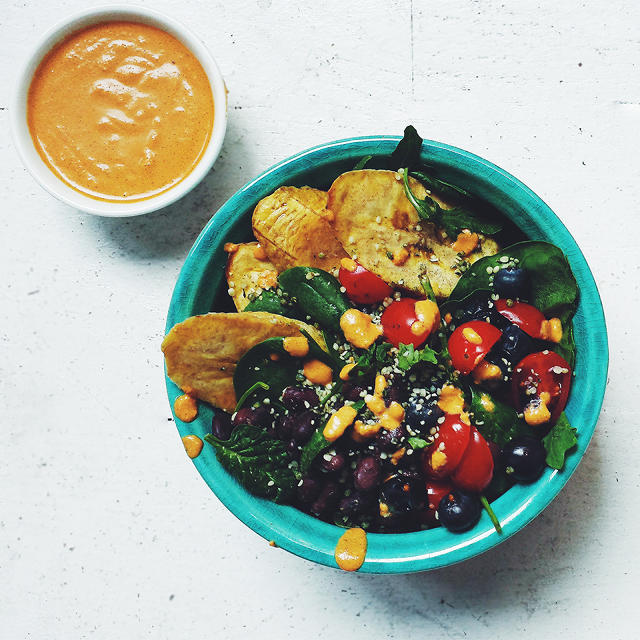
Call Me A Flexitarian
I was surprised by how doable this diet became, once I got the hang of it and it become a lifestyle. But in my case, having the opportunity to indulge in my favorite meaty dishes on the weekends and occasionally during the week was crucial to helping me stay on track. My approach of eating primarily plant-based foods during the week worked well, but I wanted to explore other approaches to flexitarian eating, in case they offered helpful alternatives.
For example, Jorge Cruise, a trainer and writer, encourages people not to give up on vegan eating altogether because it seems too hard or unsustainable. He suggests that just having a vegan breakfast can give you a boost of antioxidants from fruits and vegetables, help you start thinking of meat as a condiment, and make you feel confident about your ability to make healthy food choices throughout the day. So even if there are times when it might not be possible for me to keep up with this lifestyle, even changing one meal of the day can be beneficial.
That said, I hope to keep at this as much as I can, because the boost in my productivity and well-being during the workday is palpable.
“Even people who don’t have body-image issues think about food all the time,” says Whitney Tingle, cofounder of Sakara Life, whose meals are pictured here.

“You have to eat every day, so you’re always thinking about what you should eat, where you should, how much you should eat,” Tingle says.
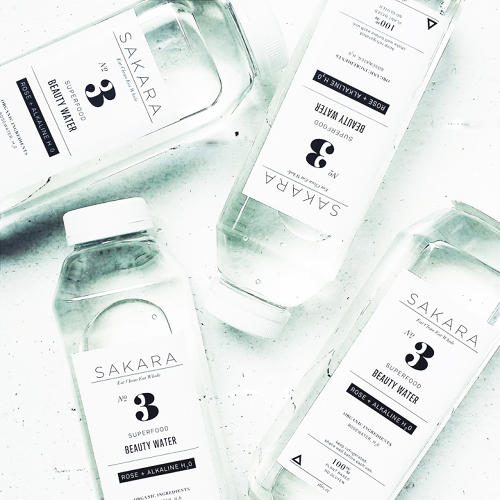
Click through for pictures of plant-based, whole food meals made by Sakara Life.
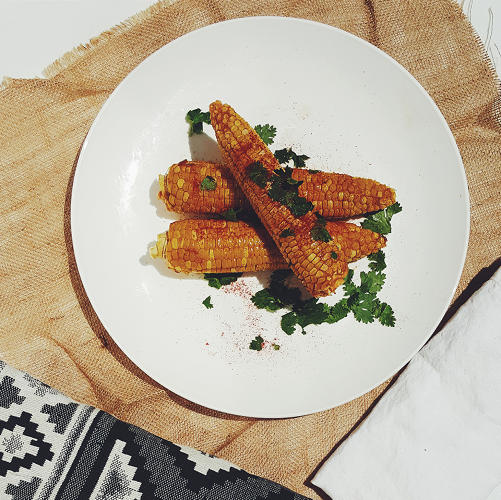
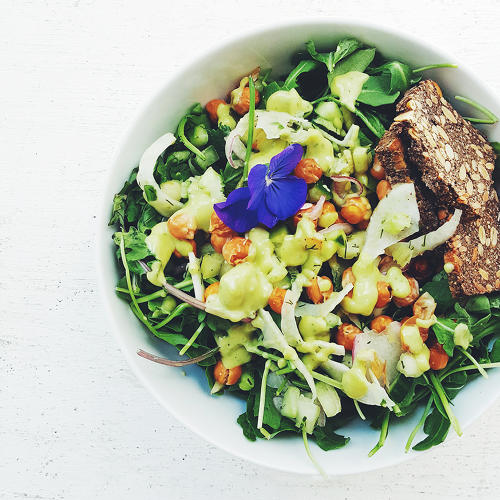
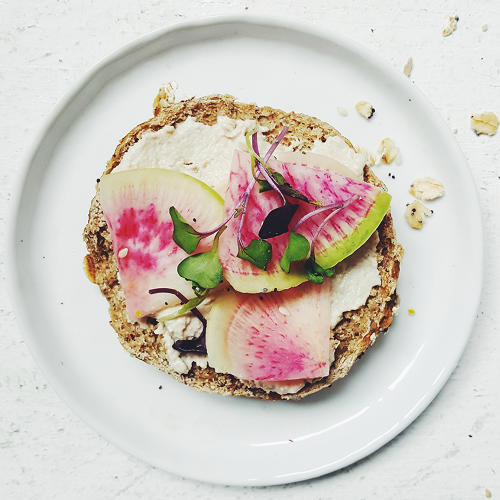
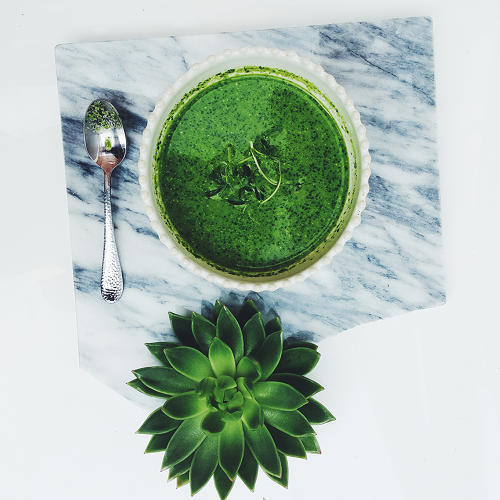
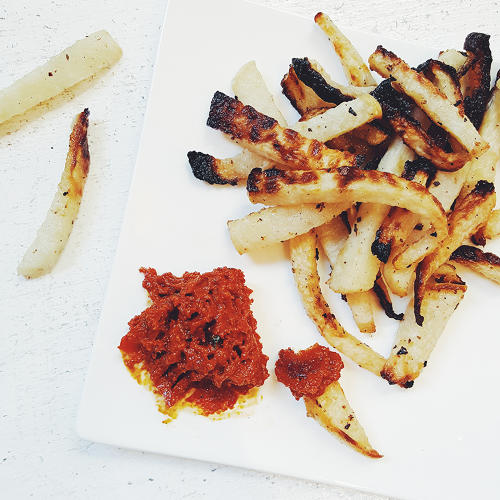
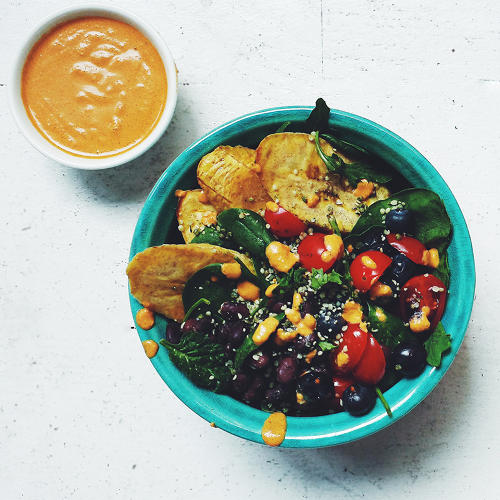
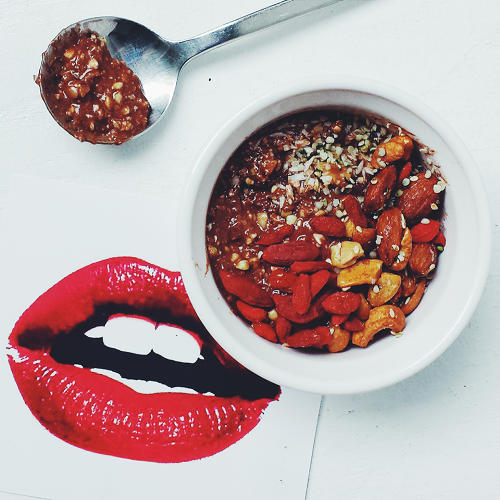

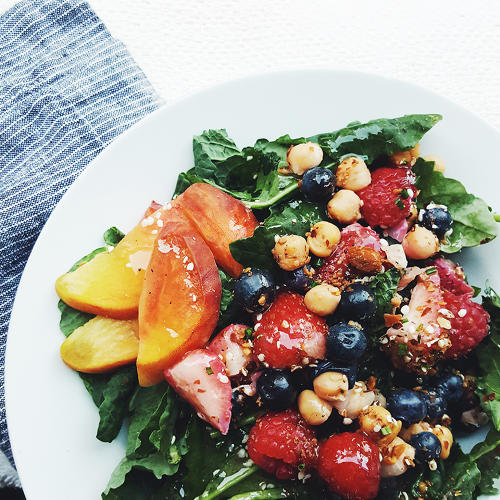

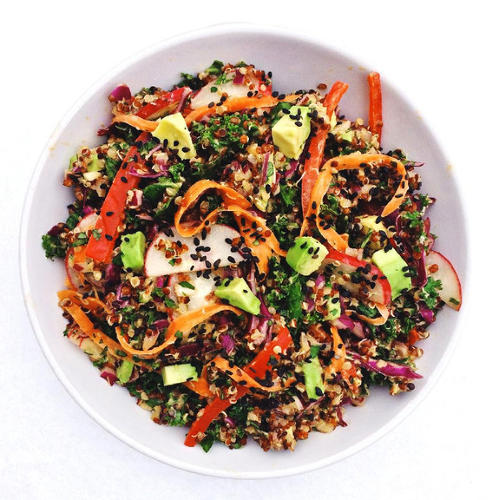

Fast Company , Read Full Story
(36)













